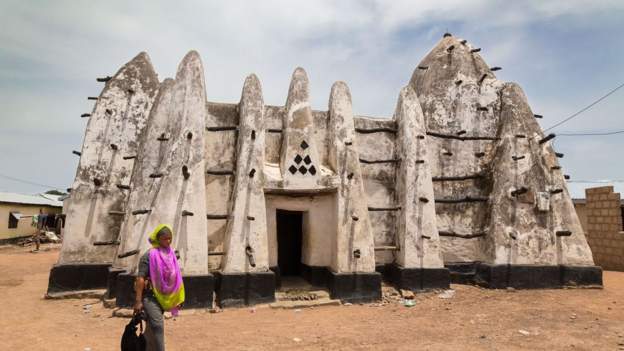Part of historic Ghanaian mosque collapses

Termites infested the wooden rafters holding the structure in place, causing it to collapse after a heavy rainstorm in Ghana.
During the late 19th and early 20th centuries, mud was used to build the religious site.
A local person familiar with the mosque’s architecture and construction could repair the damaged mosque, officials said.
Residents have been advised against razing the mosque and building a new one, according to museum authorities.
In addition to neglect and termites, modern materials like cement were also blamed for the mosque’s collapse.
Bole Mosque shares the distinctive architectural design of Tamale’s Larabanga Mosque.
Mud is applied to a framework of wooden poles. In order to give the mosque its unique appearance, protruding poles are buried into buttresses.
In northern Ghana, especially in the Wala and Gonja states, neo-Sudanese influences led to the formation of predominantly Islamic communities.
Similar mud mosques can be found in neighbouring West African countries, particularly Mali.
